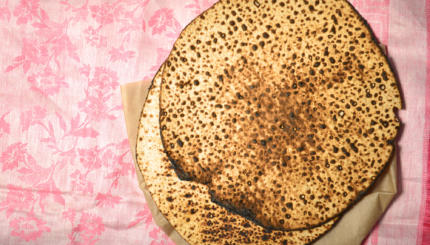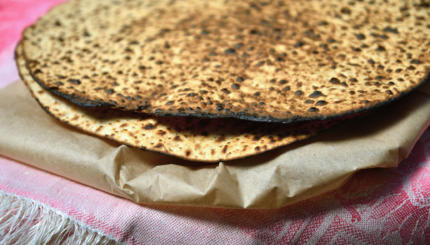It’s spring break in our school district, so we are taking a road trip.
We left our home in Olympia on the Puget Sound and drove to Boise, ID, where we have family. We drove south towards Portland then east across the length of Oregon. It’s a drive we have done many times before on family trips. This time we are taking a different route home, driving up through Idaho and Eastern Washington so we can drop my older son at a regional robotics competition.
It is a little anxiety-producing going away the week before Passover. Passover is one of those holidays that requires a lot of preparation both personally and professionally. We need to get our house ready, cleaned of all leavened products and stocked with all the special Passover foods. And I need to plan our congregation’s community seder—monitor registration, interface with our caterer and of course prepare the ritual and special readings.
But with the kids out of school, it is important to spend family time, especially when we can take time to visit extended family. And the trip, while interfering with some of the physical preparations for Passover, provides good opportunity for some spiritual preparation.
The story of Passover is a fundamental narrative within Jewish tradition and theology. Found in the Torah in the Book of Exodus, the story begins with the enslavement of the Israelites by Pharaoh in Egypt and concludes with their liberation by God through Moses. The details—the Israelites crying out, the harsh decrees of Pharaoh, Moses’s call at the burning bush, and the series of demands for freedom by Moses each accompanied by a plague—round out this overarching story of deliverance and emancipation.
The story is fundamental because of this narrative arc from oppression to liberation. It is a paradigm for personal transformation, and it is a paradigm for social change. Indeed, when we retell the story at the Passover seder, it is our requirement to make connections between the biblical narrative and our own lives and situations.
The climax of the narrative is the crossing of the Sea of Reeds (Red Sea): having left Egypt the Israelites find themselves pursued by the Egyptian army. They arrive at the Sea of Reeds and seeming have no place to turn; before them is an impassable sea and behind them is at best return to slavery and at worst death. Through both divine guidance and the human motivation for freedom, the sea is split in two and the Israelites move forward on dry land before it comes together again on top of the Egyptian army.
It is this part of the story that I have been thinking about on this road trip, as much of it has taken us by water. But not seas, rivers. We have passed by and along numerous rivers, primarily the Columbia River, which serves as the border between Washington and Oregon before emptying out into the Pacific Ocean.
Driving alongside the Columbia, and stopping at times overlooking it, I realize that I may have been imagining the story of the Exodus all wrong. Personally, I always imagined the Sea of Reeds as a vast, endless body of water. (Maybe that was the influence of the movies.) But maybe a river is a better image. With a river one is able to see the other side, and so the potential for crossing over to a new life is attainable. And rivers themselves provide means for a journey, connecting locations over vast distances.
And the image that struck me most from this trip is when we stopped alongside one of the numerous dams that dot the Columbia, dams which harness the power of the water to create energy and electricity. Humans have learned to harness the power of the flowing river. And isn’t this what happens at the Sea of Reeds, when the waters are dammed up providing new energy for the people?
[Indeed the life-giving power of rivers is already hinted at in the story, with Moses being saved from a death decree by being sent down the Nile River, and the journey to liberation was begun by Moses turning the Nile into blood.]
Engaging with our natural world and rivers on this trip has allowed me personally to think about the Passover story in new ways. And no matter how you envision the story, no matter what images stand out for you, it should be in keeping with the essence of the story: that it is a story of movement, and we must end up in a different place than where we started.



